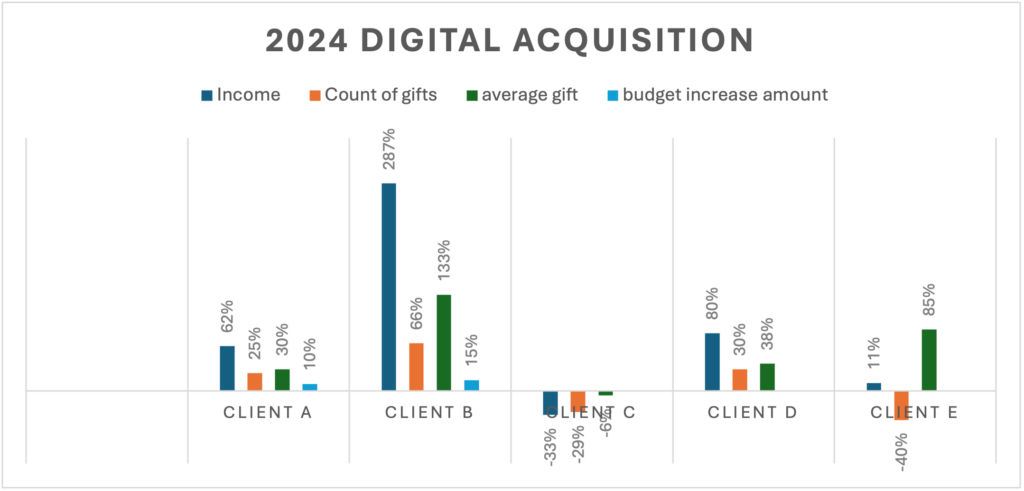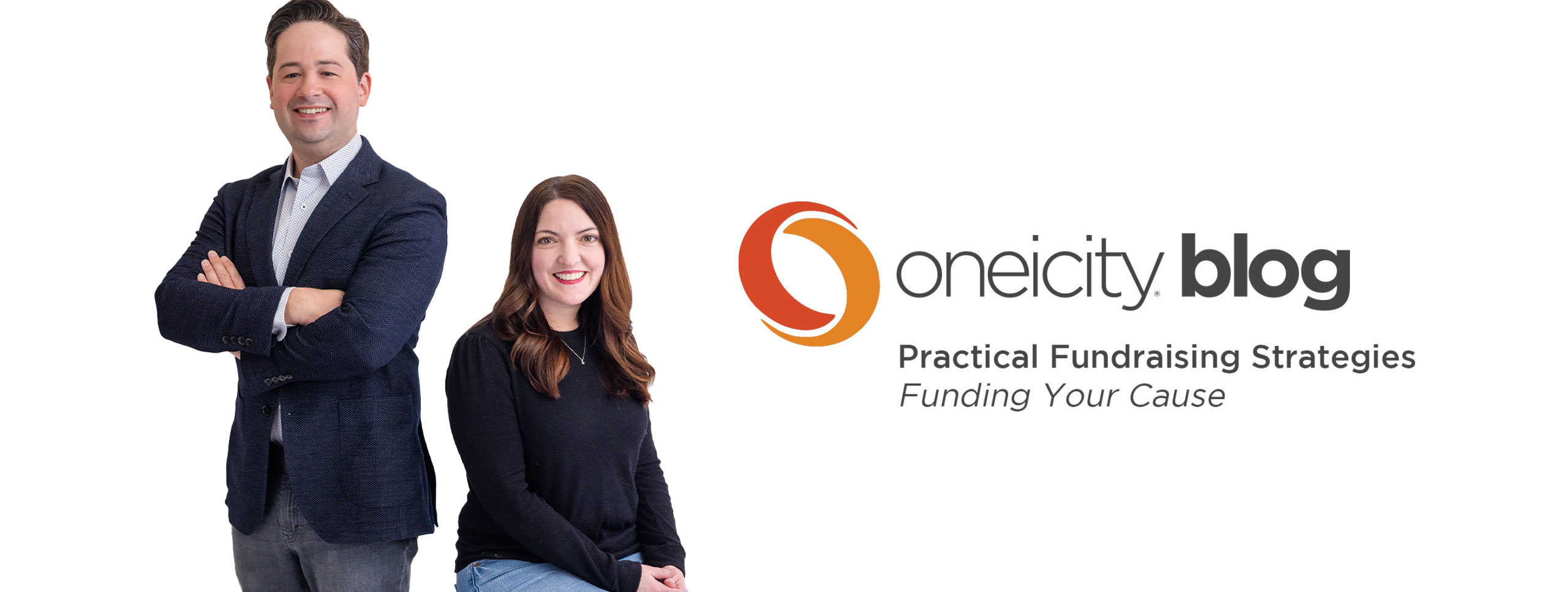Acquiring donors digitally isn’t new, but until recently, it’s taken a bit of a back seat to acquiring them through direct mail. But more and more leaders are seeing the value and importance of investing in digital acquisition.
Which has led some to ask us, “Do I need to increase my digital acquisition plan?”
In short, “Yes, you do. Don’t get left behind.”
But for more, let’s dive in.
What is digital acquisition?
First of all, let’s talk about what digital acquisition is because there’s a ton of jargon about these strategies. For simplicity, it’s obtaining new donors (someone who has never given to your nonprofit) or regaining lapsed donors (people who haven’t given to you in at least a year) through a digital channel.
Typically, this is accomplished through email, targeted ads, website, SMS, or even social media.
Most nonprofits will have at least dabbled in some digital acquisition before. In our digital, wired world it’s unusual to have not tried some donor acquisition strategies. Often through Facebook ads, promoted posts, sending emails regularly, or asking on social media for donations.
But many haven’t jumped in and fully embraced it. They’ve only dipped their toes in and tested the water.
Well, it’s time.
As you know, the internet isn’t a fad, and it’s not going anywhere. Jump on in, the water’s great!
2024 Oneicity Digital Acquisition
It’s easy to just tell you to increase your digital acquisition commitment, but it’s important for us to show you why. So, let’s talk numbers.
(If you’re not a numbers person, this won’t be like Mrs. Casey’s algebra class, don’t be scared. We got you.)
Let’s look at some of the results for a few Oneicity clients last year (2024). Before we throw numbers at you, let’s talk about what you’re looking at.
First, this is a high-level perspective.
Each client could be discussed in more detail, but for the purpose of this post, we’ve kept it focused on the basic metrics. And we’re not going to go deep on all the factors that influence results like the complexion of the client’s location, website tools, giving pages, public relations in the community, etc.
Income (the total dollar amount raised through new or regained digital donors).
The count of gifts (the total number of gifts from new or regained digital donors).
The average gift (the difference in the average gift amount from one year to the next).
Budget increase amount (did that client spend more in digital strategies from year to year?)

So what does it all mean?
Let’s look at Client A first. As you see, they increased their digital acquisition budget by 10%, and saw 62% more income through digital acquisition! They realized a great return on their investment (ROI) and gained donors who gave larger gifts.

Client B saw an even bigger jump in income with an increase of budget of only 15%. Notice that average gift increase. Not only did they find donors, they found donors who gave more, bigger gifts than the previous year.

Now look at Client C. All of their digital acquisition numbers were lower in 2024 than the year before. In 2023, this client had an incredible influx of new digital donors due to an event and a local partnership. Those were amazing but not repeatable opportunities, especially when not increasing digital acquisition at all.
2024 was a great year for Client C, but digital acquisition wasn’t a bright spot for them. And, we show all the results, not just the ones that make us look the best (although we did deliver the incredible results of 2023).

Client D continued with the previous year’s level of investment. The trick here is that in 2023, they boosted their commitment to digital acquisition. They reaped great results in 2023 due to their increased budget. In 2024, that benefit continued even without another budget increase. Client D is a perfect example of how your investment doesn’t require constant major increases. But, investment and consistency are required.

Client E is another example of how investments and returns can work. Client E did not increase their digital donor acquisition budget. They continued with their previous commitment and realized a respectable increase in income. But you probably noticed that count of gifts went down as their income and average gift went up. The previous year Client E had more smaller dollar gifts. That was nice but we wanted to help them get more of the “right” (higher capacity) donors. Fewer donors but for more dollars resulted in the right donors and the opportunity to build relationships with high-capacity donors.

Conclusion
Investing in digital acquisition is not only suggested, but we feel it’s required. That doesn’t mean give up or stop sending direct mail acquisition, but rather increase the digital part of the pie. Growing your digital acquisition will help reach donors you may not have met through direct mail.
If you aren’t sure how to do that, or if you have any questions, reach out to us! Email us at: howdy@oneicity.com
Photo by John Schnobrich on Unsplash

